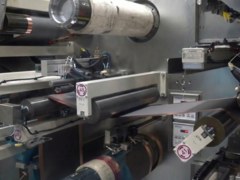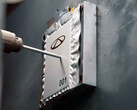China's automotive conglomerate GAC Group has recently completed its first large-capacity all-solid-state battery production line, with the facility currently undergoing small-batch testing and production. This is reportedly the first facility capable of producing automotive-grade all-solid-state batteries with 60+ Ah (ampere-hours) capacity, making GAC the first in the industry to achieve this capability.
The energy density of this solid-state battery is nearly double that of conventional lithium-ion batteries, with GAC's research director Qi Hongzhong claiming that current vehicles with 500km (310 miles) of range could exceed 1,000km (620 miles) with these cells. Do remember, however, that these figures are based on China's CLTC test cycle, which typically yields ranges about a third higher than EPA estimates, suggesting a real-world range of approximately 650-750km (400-465 miles). GAC's battery will reportedly have an areal capacity of 7.7 mAh/cm² compared to the <5 mAh/cm² of conventional batteries. Higher capacity per cell equates to greater energy density in battery packs.
The difference between conventional batteries and solid-state batteries lies in the electrolyte material: whereas conventional ones use liquid, solid-state batteries use solid electrolytes. There are benefits to this, the "liquid-free" design improves heat resistance and safety, with the solid electrolyte able to withstand temperatures of 300 to 400°C (approximately 570-750°F) compared to the lower ~200°C (approximately 390°F) limit of conventional batteries.
GAC Group also achieved an efficiency breakthrough in the negative electrode manufacturing process, using a so-called "dry process" that combines three traditionally independent steps (slurry preparation, coating, and rolling) into a single step. This reduction in complexity results in lower energy consumption and improves overall manufacturing efficiency, further reducing costs.
The official roadmap states that by 2026, small-batch vehicle integration and testing will be planned, with 2027-2030 being the years for a gradual ramp-up toward mass production. It is important to note, however, that while this is a technical breakthrough, commercial viability depends on supply chains and long-term validation. Nevertheless, the breakthrough allows China to take another step closer to its "Energy-Saving and New Energy Vehicle Technology Roadmap 3.0," which predicts large-scale global adoption of solid-state batteries by 2035.
Source(s)
CNR (in Chinese)


















